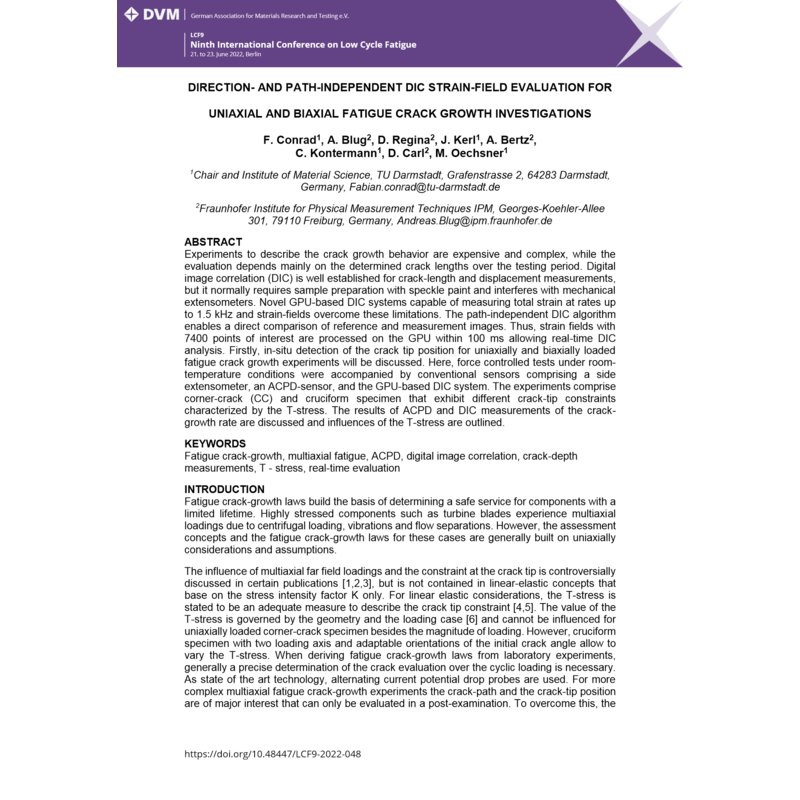- Online only



Experiments to describe the crack growth behavior are expensive and complex, while the evaluation depends mainly on the determined crack lengths over the testing period. Digital image correlation (DIC) is well established for crack-length and displacement measurements, but it normally requires sample preparation with speckle paint and interferes with mechanical extensometers. Novel GPU-based DIC system capable of measuring total strain at rates up to 1.2 kHz and strain-fields overcome these limitations. The path-independent DIC algorithm enables a direct comparison of reference and measurement images. Thus, strain fields with 5000 points of interest are processed on the GPU within 100 ms allowing real-time DIC analysis (Figure 1).
Firstly, in-situ detection of the crack…

Datenschutzbedingungen (bearbeiten im Modul "Kundenvorteile")

Lieferbedingungen (bearbeiten im Modul "Kundenvorteile")

Rücksendebedingungen (bearbeiten im Modul "Kundenvorteile")
Experiments to describe the crack growth behavior are expensive and complex, while the evaluation depends mainly on the determined crack lengths over the testing period. Digital image correlation (DIC) is well established for crack-length and displacement measurements, but it normally requires sample preparation with speckle paint and interferes with mechanical extensometers. Novel GPU-based DIC system capable of measuring total strain at rates up to 1.2 kHz and strain-fields overcome these limitations. The path-independent DIC algorithm enables a direct comparison of reference and measurement images. Thus, strain fields with 5000 points of interest are processed on the GPU within 100 ms allowing real-time DIC analysis (Figure 1).
Firstly, in-situ detection of the crack tip position for uniaxially and biaxially loaded fatigue crack growth experiments will be discussed. Here, force controlled tests under room-temperature conditions were accompanied by conventional sensors comprising a side extensometer, an ACPD-sensor, and the GPU-based DIC system. The divergence div u ⃗ of the displacement field u ⃗ is a direction-independent measure for local strain ∆ε. However, determining crack length a by a threshold is possible but somewhat arbitrary, whereas the maximum rotation rot u⃗ appears to be a distinct measure for crack tip position (Figure 1c).
Secondly, crack propagation rates are quantified as a function of crack tip loading parameters. Targeting component near loading scenarios, harmonic tests with a frequency of 5 Hz are used for a base description of crack growth behavior. Additionally, the influence of superimposed LCF-HCF-cycles is investigated by tests with cyclic overloads. To study far-field multiaxiality, uniaxially loaded corner-crack and biaxially loaded cruciform specimens are used. Comparing DIC measurements with linear-elastic and elastic-plastic FEM analysis enable a comprising description of fatigue crack growth behavior by comparing parameters such as strain-field around the crack-tip, size of the plastic zone, crack flank displacements, and stress intensity factors. As a result, DIC measurements offer a more accurate evaluation of crack closure behaviour within a cycle.